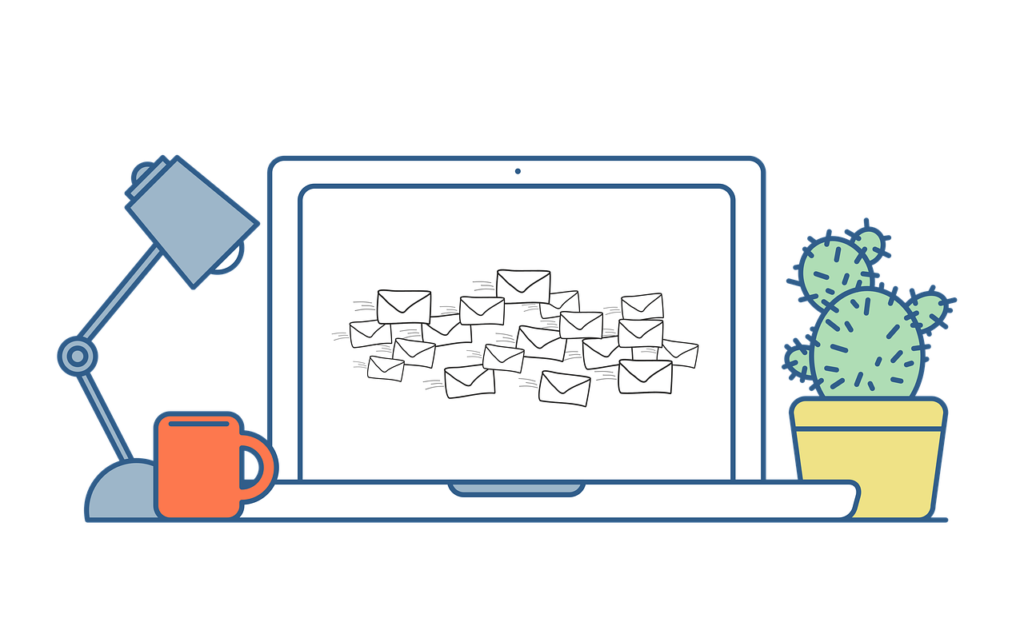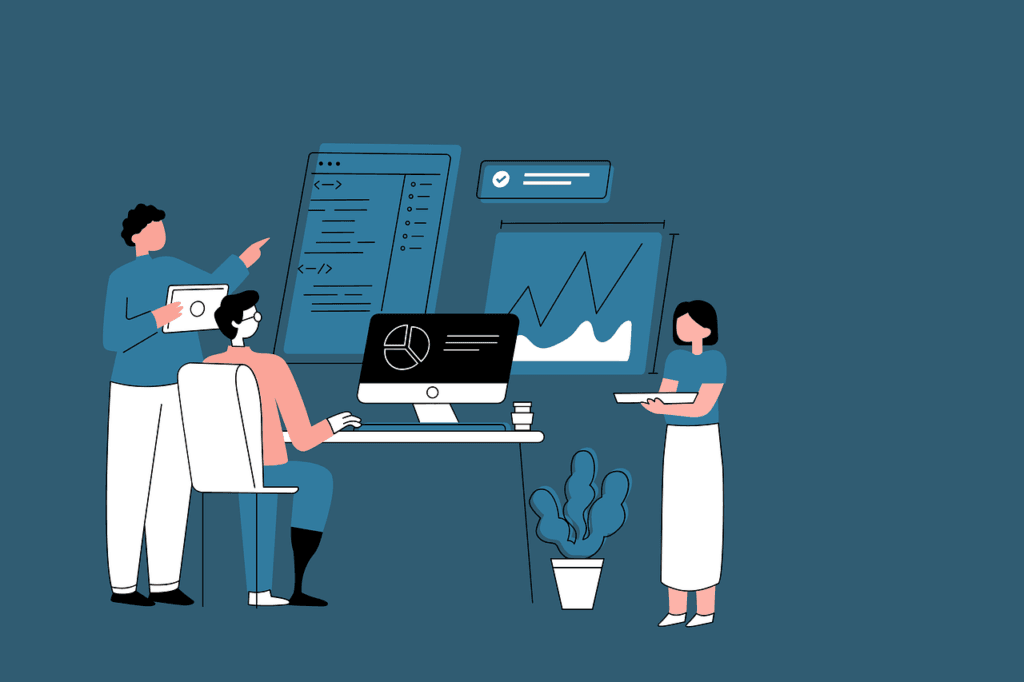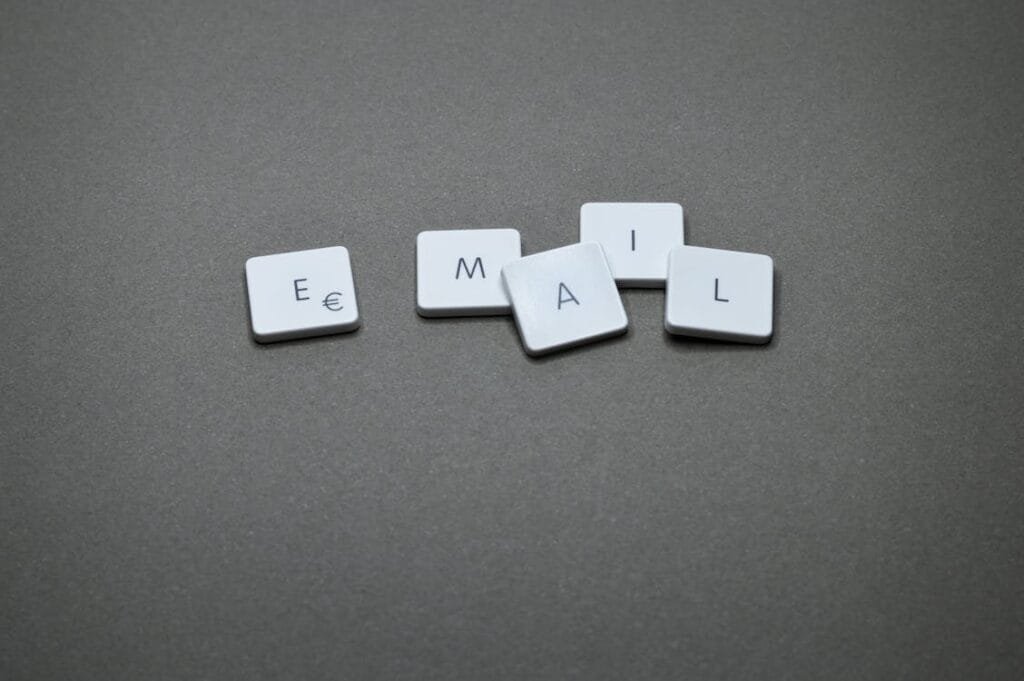This Article has been revised, edited and added to, by Poulomi Chakraborty.
- Building a Strong Foundation
- Driving Sales with Email Marketing
- Enhancing Customer Retention
- Leveraging Advanced Email Marketing Strategies
- Analyzing and Optimizing Your Campaigns
- Enhancing Customer Retention Through Email Marketing
- Integrating Email Marketing with Other Channels
- Leveraging Data and Analytics for Email Marketing Success
- The Role of Automation in Email Marketing
- Conclusion
Email marketing remains one of the most effective tools for e-commerce businesses to drive sales and retain customers. While the rise of social media and other digital marketing channels has diversified marketing strategies, email marketing still holds a unique and powerful position. This article will explore various strategies that can help e-commerce businesses leverage email marketing to boost sales and enhance customer retention.
Let’s start with a quick comparison to understand why email marketing stands out in the digital marketing landscape. Think of social media as a bustling marketplace and email marketing as a private conversation. In the marketplace, you can shout to grab attention, but your message may get lost in the noise. In a private conversation, however, you can speak directly to your customer, making the interaction more personal and impactful. This comparison highlights the primary strength of email marketing—its ability to create direct, personalized communication with your audience.
Building a Strong Foundation

The Importance of a Quality Email List
A successful email marketing campaign begins with a high-quality email list. It’s not just about the number of subscribers; the quality of your list determines the effectiveness of your campaigns. Quality here means having subscribers who are genuinely interested in your products and are likely to engage with your emails.
To build such a list, focus on attracting subscribers who align with your target audience. Offer incentives like discounts, free shipping, or exclusive content to encourage sign-ups. Ensure that your sign-up forms are easy to find and fill out. You can place them on your website, blog, social media profiles, and during the checkout process.
Segmentation and Personalization
Segmentation and personalization are crucial for maximizing the effectiveness of your email campaigns. Segmentation involves dividing your email list into smaller groups based on specific criteria such as purchase history, browsing behavior, or demographic information. This allows you to send more targeted and relevant emails to each group.
Personalization goes beyond addressing the recipient by their first name. It involves using the data you have on each subscriber to tailor the content of your emails to their preferences and behaviors.
For instance, you can recommend products based on past purchases or browsing history, send birthday wishes with a special discount, or offer exclusive deals to your most loyal customers.
Crafting Compelling Content
Content is the heart of any email marketing campaign. To engage your audience and drive sales, your emails need to offer value. This can be in the form of informative content, special offers, or engaging stories about your products or brand.
When crafting your emails, keep the content clear, concise, and compelling. Use a conversational tone to make your emails feel personal and friendly. Highlight the benefits of your products and include strong calls-to-action (CTAs) that guide the reader towards making a purchase.
Visuals are also important; use high-quality images to showcase your products and make your emails visually appealing.
Driving Sales with Email Marketing
Promotional Campaigns
Promotional campaigns are a staple of email marketing for e-commerce. These campaigns can include seasonal sales, holiday promotions, flash sales, and special discounts.
The key to a successful promotional campaign is creating a sense of urgency. Limited-time offers and countdown timers can encourage subscribers to act quickly.
Make sure your promotional emails are eye-catching and easy to read. Use bold headlines, clear CTAs, and compelling visuals to grab the reader’s attention. Personalize your offers based on the recipient’s past behavior and preferences to make them more relevant and appealing.
Product Launches and Updates
Email marketing is an excellent way to announce new product launches and updates. When introducing a new product, create excitement by highlighting its features, benefits, and unique selling points. Use storytelling to connect with your audience emotionally and show how the product can improve their lives.
For product updates, keep your customers informed about new features, improvements, or changes. This not only keeps your audience engaged but also demonstrates that your brand is constantly evolving and improving.
Abandoned Cart Emails
Abandoned cart emails are one of the most effective types of email campaigns for e-commerce businesses. These emails target customers who added items to their cart but didn’t complete the purchase. A well-crafted abandoned cart email can remind the customer of what they left behind and encourage them to complete their purchase.
To make abandoned cart emails more effective, personalize them by including the specific items the customer left in their cart. Offer incentives such as discounts or free shipping to entice them to return and complete their purchase. Include clear CTAs that direct the customer back to their cart.
Enhancing Customer Retention

Welcome Series
A welcome series is a sequence of emails sent to new subscribers to introduce them to your brand and products. This series is crucial for making a strong first impression and setting the tone for your future relationship with the subscriber.
In your welcome series, start by thanking the subscriber for joining your list and offer a special discount or incentive. Introduce your brand story, highlight your best-selling products, and provide valuable content that aligns with their interests. A well-crafted welcome series can turn new subscribers into loyal customers.
Post-Purchase Follow-Up
Post-purchase follow-up emails are essential for building long-term relationships with your customers. After a customer makes a purchase, send them a thank-you email with details about their order and what to expect next.
Follow up with additional emails to check in on their satisfaction, offer product recommendations, and encourage them to leave a review.
By staying engaged with your customers after the purchase, you can increase their satisfaction, encourage repeat purchases, and build loyalty.
Re-Engagement Campaigns
Over time, some subscribers may become inactive and stop engaging with your emails. Re-engagement campaigns are designed to win back these inactive subscribers. Start by identifying inactive subscribers and segmenting them into a separate list.
Send re-engagement emails that acknowledge their inactivity and offer an incentive to re-engage, such as a special discount or exclusive content. Ask for feedback to understand why they became inactive and how you can improve their experience. If they still don’t engage, consider removing them from your list to maintain a healthy and engaged subscriber base.
Leveraging Advanced Email Marketing Strategies
To stay ahead of the competition and maximize the impact of your email marketing efforts, it’s essential to leverage advanced strategies. These techniques can help you deliver highly personalized and engaging experiences to your customers, driving higher sales and retention rates.
Behavioral Trigger Emails
Behavioral trigger emails are automated messages sent based on specific actions or behaviors exhibited by your customers. These emails are highly relevant and timely, making them incredibly effective for driving engagement and conversions.
Common triggers include browsing certain products, downloading a resource, or spending a certain amount of time on your website. By setting up automated workflows, you can send personalized emails that respond to these behaviors. For example, if a customer views a particular product multiple times but doesn’t make a purchase, you can send a follow-up email with more information about the product or a special offer.
Dynamic Content
Dynamic content allows you to tailor different parts of your email to different segments of your audience, all within a single email template. This means each recipient sees content that’s relevant to them, based on their preferences, behavior, or demographic information.
For instance, you could send an email promoting a sale, but showcase different products to different segments based on their past purchase history. This level of personalization can significantly increase engagement and conversion rates, as recipients receive content that feels customized to their needs and interests.
Loyalty Programs
Integrating your email marketing with a customer loyalty program can boost retention and encourage repeat purchases. Use your emails to keep customers informed about their loyalty points, upcoming rewards, and exclusive member benefits.
Regularly update your loyal customers on their points balance and remind them how close they are to their next reward. Highlight special offers that are available only to loyalty program members. This not only incentivizes repeat purchases but also makes your loyal customers feel valued and appreciated.
Upselling and Cross-Selling
Upselling and cross-selling are powerful techniques to increase the average order value and enhance the customer experience. Use your email marketing to recommend complementary products or upgrades based on previous purchases.
For upselling, suggest higher-end products or add-ons that enhance the value of the customer’s original purchase. For cross-selling, recommend related products that the customer might be interested in. For example, if a customer bought a camera, you could cross-sell accessories like lenses, tripods, or carrying cases.
Seasonality and Event-Based Campaigns
Seasonal and event-based email campaigns can drive significant sales by tapping into the natural purchasing behaviors of your audience during specific times of the year. Plan your email marketing calendar around major holidays, seasons, and events relevant to your industry.
For example, you can create special promotions for Black Friday, Cyber Monday, Christmas, and other holidays. Tailor your messaging and offers to fit the occasion, and create a sense of urgency to encourage immediate action. Event-based campaigns can also include product launches, company anniversaries, and other significant dates.
Analyzing and Optimizing Your Campaigns

To ensure continuous improvement and success in your email marketing efforts, it’s crucial to analyze the performance of your campaigns and optimize them based on the insights gained.
Tracking Key Metrics
Key performance indicators (KPIs) are essential for understanding the effectiveness of your email marketing campaigns. Some of the most important metrics to track include open rates, click-through rates, conversion rates, and unsubscribe rates.
These metrics provide valuable insights into how your audience is engaging with your emails and where you can make improvements.
Open rates indicate how many people are opening your emails, giving you a sense of how compelling your subject lines are. Click-through rates show how many recipients are clicking on the links within your emails, which helps you understand the effectiveness of your content and CTAs.
Conversion rates measure how many recipients are taking the desired action, such as making a purchase, while unsubscribe rates indicate if your content is resonating with your audience or if adjustments are needed.
A/B Testing
A/B testing, or split testing, is a powerful technique for optimizing your email marketing campaigns. By testing different versions of your emails, you can identify what elements work best and make data-driven decisions to improve your campaigns.
Test various elements of your emails, including subject lines, headlines, images, CTAs, and email copy. Analyze the results to determine which variations perform better and implement those changes in your future campaigns. Continuous A/B testing allows you to refine your strategy and achieve better results over time.
Customer Feedback
Listening to your customers is key to improving your email marketing efforts. Encourage feedback through surveys, direct responses, and social media interactions. Ask your customers what they like about your emails, what they don’t, and what they would like to see more of.
Use this feedback to make informed adjustments to your email campaigns. For example, if customers indicate that they prefer more product recommendations, you can increase the frequency of such content. If they express interest in exclusive behind-the-scenes content, consider incorporating that into your emails.
Leveraging Advanced Analytics
Advanced analytics tools can provide deeper insights into your email marketing performance. Use these tools to track customer behavior, segment your audience more effectively, and identify trends and patterns.
Analyze customer journey data to understand how your emails influence purchasing decisions and customer interactions with your website. Use predictive analytics to anticipate customer needs and behaviors, allowing you to tailor your campaigns more precisely.
Enhancing Customer Retention Through Email Marketing
Retaining customers is just as important as acquiring new ones, if not more so. The cost of retaining a customer is significantly lower than the cost of acquiring a new one, and loyal customers are more likely to make repeat purchases and recommend your brand to others. Here are some strategies to enhance customer retention through email marketing.
Building Strong Relationships
The foundation of customer retention lies in building strong, lasting relationships with your customers. Email marketing provides a direct line of communication, allowing you to engage with your customers regularly and personally.
Start by sending a welcome series to new customers, introducing them to your brand, products, and values. This sets the stage for a positive relationship and encourages further interaction.
Throughout the customer journey, send personalized emails that show you understand their preferences and needs. Use dynamic content to tailor your messages to individual recipients, making them feel valued and appreciated.
Consistent Communication
Consistency is key to maintaining a strong relationship with your customers. Regular communication keeps your brand top of mind and ensures that customers remain engaged with your content and offers.
Develop a content calendar to plan your email campaigns in advance, ensuring a steady flow of emails. Include a mix of promotional emails, educational content, product updates, and exclusive offers to keep your audience interested.
Avoid bombarding your customers with too many emails, as this can lead to unsubscribe requests. Instead, find a balance that keeps your audience engaged without overwhelming them.
Exclusive Offers and Loyalty Programs
Rewarding your loyal customers with exclusive offers and loyalty programs can significantly enhance retention. Use your email marketing to inform customers about special discounts, early access to sales, and exclusive products available only to loyal members.
Implement a loyalty program that offers points for purchases, referrals, and other actions. Regularly update customers on their points balance and the rewards they can earn. This not only incentivizes repeat purchases but also fosters a sense of belonging and appreciation.
Personalized Recommendations
Personalized product recommendations can drive repeat purchases and enhance the customer experience. Use data from previous interactions to suggest products that align with the customer’s interests and preferences.
Send emails with tailored product recommendations based on past purchases, browsing behavior, and demographic information. Highlight how the recommended products complement their previous purchases or address their specific needs.
This personalized approach makes the customer feel understood and increases the likelihood of additional purchases.
Post-Purchase Engagement
Engaging with customers after a purchase is crucial for building long-term relationships. Post-purchase emails can include order confirmations, shipping updates, and requests for feedback or reviews.
Follow up with customers to ensure they are satisfied with their purchase and offer assistance if needed. Send emails with tips on how to use the product, care instructions, and related product recommendations. This not only enhances the customer experience but also opens the door for future purchases.
Re-Engagement Campaigns
Re-engagement campaigns are designed to win back inactive customers and rekindle their interest in your brand. Identify customers who haven’t interacted with your emails or made a purchase in a while and segment them into a separate list.
Send personalized re-engagement emails that acknowledge their inactivity and offer an incentive to return, such as a special discount or exclusive content. Ask for feedback to understand why they became inactive and how you can improve their experience. If they still don’t engage, consider removing them from your list to maintain a healthy and engaged subscriber base.
Celebrating Milestones
Celebrating milestones with your customers is a great way to show appreciation and strengthen your relationship. Use your email marketing to recognize customer anniversaries, birthdays, and other significant dates.
Send personalized emails with special offers or discounts to celebrate these milestones. For example, offer a birthday discount or a special anniversary gift. These gestures make customers feel valued and appreciated, increasing their loyalty to your brand.

Integrating Email Marketing with Other Channels
To maximize the impact of your email marketing efforts, it’s essential to integrate your email campaigns with other marketing channels. This multi-channel approach ensures a cohesive and consistent customer experience, reinforcing your message and increasing the likelihood of engagement and conversions.
Social Media Integration
Social media and email marketing can complement each other beautifully. Use your social media platforms to promote your email list, offering exclusive content or discounts to followers who subscribe. Similarly, promote your social media profiles in your emails, encouraging subscribers to follow you for more updates and engagement.
Leverage social media to retarget your email subscribers. For example, if a subscriber clicks on a product link in an email but doesn’t make a purchase, you can use social media ads to remind them of the product. This reinforces your message and keeps your brand top of mind.
Content Marketing Synergy
Your content marketing efforts can significantly enhance your email campaigns. Share your latest blog posts, videos, and other content with your email subscribers, providing them with valuable information and keeping them engaged with your brand.
Use email to drive traffic to your content, and vice versa. For instance, you can create a blog post that addresses common customer questions and promote it through your email newsletter. This not only provides value to your subscribers but also helps increase your content’s visibility and engagement.
SMS Marketing
SMS marketing can be an effective complement to your email campaigns, especially for time-sensitive promotions and updates. Use SMS to send quick alerts, such as flash sales, event reminders, and order confirmations.
Integrate your SMS and email marketing efforts to create a seamless customer experience. For example, you can follow up an email promotion with an SMS reminder, increasing the chances of engagement. Ensure that your messaging is consistent across both channels to maintain a cohesive brand experience.
Paid Advertising
Paid advertising, including Google Ads and social media ads, can enhance your email marketing efforts by expanding your reach and attracting new subscribers. Use targeted ads to promote your lead magnets and sign-up forms, driving traffic to your email list.
Retargeting ads are particularly effective for email subscribers who have shown interest but haven’t converted. Use retargeting to remind them of the products they viewed, offer additional incentives, and encourage them to complete their purchase.
Influencer Partnerships
Partnering with influencers can help you reach a broader audience and build credibility for your brand. Collaborate with influencers to promote your email list, share exclusive content, and drive engagement.
For example, you can work with influencers to create special offers or exclusive content for their followers, encouraging them to subscribe to your email list. Feature influencer testimonials and reviews in your emails to build trust and social proof.
In-Store and Offline Integration
If you have physical stores, integrating your email marketing with your in-store experience can enhance customer engagement and retention. Collect email addresses at the point of sale by offering incentives like digital receipts, loyalty program sign-ups, or exclusive discounts.
Use email to keep your in-store customers informed about upcoming events, promotions, and new arrivals. Encourage online subscribers to visit your physical stores by offering in-store exclusive deals and promotions.
Creating a Cohesive Customer Journey
The key to successful multi-channel marketing is creating a cohesive customer journey that seamlessly integrates email marketing with other channels. Ensure that your messaging, branding, and customer experience are consistent across all touchpoints.
Map out the customer journey from awareness to conversion and beyond, identifying opportunities to engage with your audience through different channels. Use data and analytics to understand how your customers interact with each channel and optimize your strategy accordingly.
Measuring Multi-Channel Success
Measuring the success of your multi-channel marketing efforts is crucial for continuous improvement. Use analytics tools to track customer interactions across different channels and understand how they contribute to your overall marketing goals.
Monitor key metrics such as email open rates, click-through rates, conversion rates, social media engagement, and website traffic. Analyze the data to identify patterns and insights that can inform your future strategies.
Regularly review your multi-channel marketing performance and make adjustments based on the insights gained. This iterative approach will help you refine your strategy, improve customer engagement, and drive better results.
Leveraging Data and Analytics for Email Marketing Success

Understanding and utilizing data is crucial for the success of any email marketing campaign. In the e-commerce industry, where consumer behavior can change rapidly, having access to and effectively using data can significantly impact your campaign’s performance.
Collecting the Right Data
The foundation of data-driven email marketing is collecting the right data. This starts with basic demographic information but extends to behavioral data, purchase history, and engagement metrics.
You can gather data through various means: website analytics, CRM systems, purchase records, and direct feedback from customers. Ensure your data collection methods are compliant with privacy regulations and that you have clear policies in place to protect customer information.
Analyzing Customer Behavior
Once you have the data, the next step is to analyze it to gain insights into your customers’ behaviors and preferences. Look for patterns in purchase history, browsing behavior, and email engagement.
For example, identify which products are frequently bought together, which emails have the highest open and click-through rates, and what times of day your customers are most active.
These insights can help you tailor your email content to better meet your customers’ needs and preferences. For instance, if you notice that a particular segment of your audience tends to purchase during sales, you can target them with exclusive early access to upcoming promotions.
Predictive Analytics
Predictive analytics uses historical data and machine learning algorithms to predict future customer behaviors. In email marketing, this can be used to anticipate customer needs, optimize send times, and personalize content.
For example, predictive analytics can help you identify which customers are likely to churn and allow you to send targeted retention emails to those individuals. Similarly, it can predict which products a customer is likely to purchase next, enabling you to send personalized recommendations that increase the likelihood of conversion.
Personalizing Email Campaigns
Personalization is a key driver of email marketing success. Use the data you’ve collected to create highly personalized email campaigns that resonate with your audience.
This can include personalized subject lines, tailored content based on purchase history or browsing behavior, and dynamic content that changes based on the recipient’s preferences. Personalization not only increases engagement but also builds a stronger connection between your brand and your customers.
A/B Testing and Optimization
Continuous optimization is essential for maximizing the effectiveness of your email campaigns. A/B testing, or split testing, allows you to compare different versions of an email to see which performs better.
Test various elements of your emails, such as subject lines, headlines, images, CTAs, and overall layout. Analyze the results to identify what resonates most with your audience and implement the winning elements in future campaigns.
Additionally, regularly review your email performance metrics and make data-driven adjustments to improve engagement and conversion rates. This iterative approach ensures that your email marketing efforts are continually evolving and improving.
Advanced Segmentation
Advanced segmentation goes beyond basic demographic information and uses behavioral and engagement data to create more nuanced audience segments. This allows you to send highly targeted emails that are relevant to each segment.
For example, segment your audience based on their purchasing frequency, average order value, or engagement level. Create tailored campaigns for each segment, such as special offers for high-value customers, re-engagement emails for inactive subscribers, or product recommendations for frequent buyers.
Monitoring Key Metrics
Monitoring key metrics is crucial for understanding the success of your email marketing campaigns and identifying areas for improvement. Some of the most important metrics to track include:
- Open Rates: The percentage of recipients who open your emails. High open rates indicate that your subject lines are compelling and your audience is interested in your content.
- Click-Through Rates (CTR): The percentage of recipients who click on links within your emails. High CTRs suggest that your email content is engaging and your CTAs are effective.
- Conversion Rates: The percentage of recipients who complete a desired action, such as making a purchase. This metric is critical for measuring the overall effectiveness of your campaigns.
- Bounce Rates: The percentage of emails that couldn’t be delivered to the recipient’s inbox. High bounce rates can indicate issues with your email list quality or deliverability.
- Unsubscribe Rates: The percentage of recipients who opt out of receiving future emails. Monitoring this metric helps you understand if your content is resonating with your audience or if adjustments are needed.
Using Feedback for Continuous Improvement
Customer feedback is invaluable for improving your email marketing efforts. Encourage your subscribers to share their thoughts on your emails through surveys, direct responses, and social media interactions.
Use this feedback to make informed adjustments to your email campaigns. For example, if customers indicate that they prefer receiving emails at a certain time of day, adjust your send times accordingly. If they express interest in more product information or behind-the-scenes content, incorporate those elements into your emails.
Leveraging Advanced Analytics Tools
Advanced analytics tools can provide deeper insights into your email marketing performance and help you make more informed decisions. Use these tools to track customer behavior, segment your audience more effectively, and identify trends and patterns.
For example, heat maps can show you where recipients are clicking within your emails, helping you optimize your layout and CTAs. Engagement scores can help you identify your most active and valuable subscribers, allowing you to target them with exclusive offers and content.
The Role of Automation in Email Marketing

Automation is a game-changer for email marketing, allowing you to send personalized, timely, and relevant emails at scale. By automating repetitive tasks, you can focus on strategic planning and creative execution, ensuring that your campaigns are both efficient and effective.
Setting Up Automated Workflows
Automated workflows are sequences of emails triggered by specific actions or behaviors. These workflows can save you time and ensure that your subscribers receive the right message at the right time.
Common automated workflows include welcome series for new subscribers, abandoned cart emails, post-purchase follow-ups, and re-engagement campaigns. Each workflow should be designed to guide the recipient through the customer journey, providing value and encouraging further interaction with your brand.
Personalizing Automation
Even though automation involves pre-set sequences, it doesn’t mean the emails should feel impersonal. Use dynamic content and personalization tokens to tailor each email to the recipient’s preferences and behavior.
For example, a welcome series can include personalized product recommendations based on the subscriber’s browsing history. Abandoned cart emails can feature the exact items left in the cart, along with personalized incentives to complete the purchase.
Optimizing Send Times
Timing plays a crucial role in email marketing success. Automated workflows allow you to optimize send times based on each recipient’s behavior and preferences.
Use data and analytics to identify the best times to send emails to your audience. For instance, if you notice that your subscribers are most active in the evening, schedule your automated emails to be sent during that time. This increases the likelihood of your emails being opened and acted upon.
Maintaining Engagement
Automation can help maintain engagement with your subscribers by ensuring that they receive regular, relevant content. Set up automated sequences for different stages of the customer journey, from onboarding new subscribers to nurturing leads and retaining loyal customers.
Regularly review and update your automated workflows to ensure they remain effective and aligned with your business goals. Continuously monitor performance metrics and make adjustments based on the insights gained.
Reducing Churn
Automated re-engagement campaigns can help reduce churn by targeting inactive subscribers and encouraging them to re-engage with your brand. Set up triggers to identify when a subscriber becomes inactive and send personalized re-engagement emails to win them back.
These emails can include special offers, exclusive content, or surveys to understand why they became inactive and how you can improve their experience. By proactively addressing inactivity, you can reduce churn and retain more customers.
Conclusion
Email marketing remains a powerful tool for e-commerce businesses to drive sales and enhance customer retention. By building a quality email list, personalizing content, leveraging advanced strategies like behavioral triggers and dynamic content, and integrating email with other marketing channels, you can create compelling and effective campaigns. Analyzing data and continuously optimizing your efforts ensures sustained success.
Automation further enhances efficiency, allowing you to maintain consistent engagement and reduce churn. By focusing on delivering value and creating personalized, relevant experiences, your email marketing efforts can significantly contribute to the growth and success of your e-commerce business. Stay committed to understanding your audience and adapting to their needs, and you will see impressive results.
Read Next
- How to use SEMrush: An Explainer
- How to use Zoho CRM: An Explainer
- How to use Tailwind for Social Media: An Explainer
- How to use SocialBee for Social Media: An Explainer
- How to use SproutSocial for Social Media: A Practical Guide






















Comments are closed.